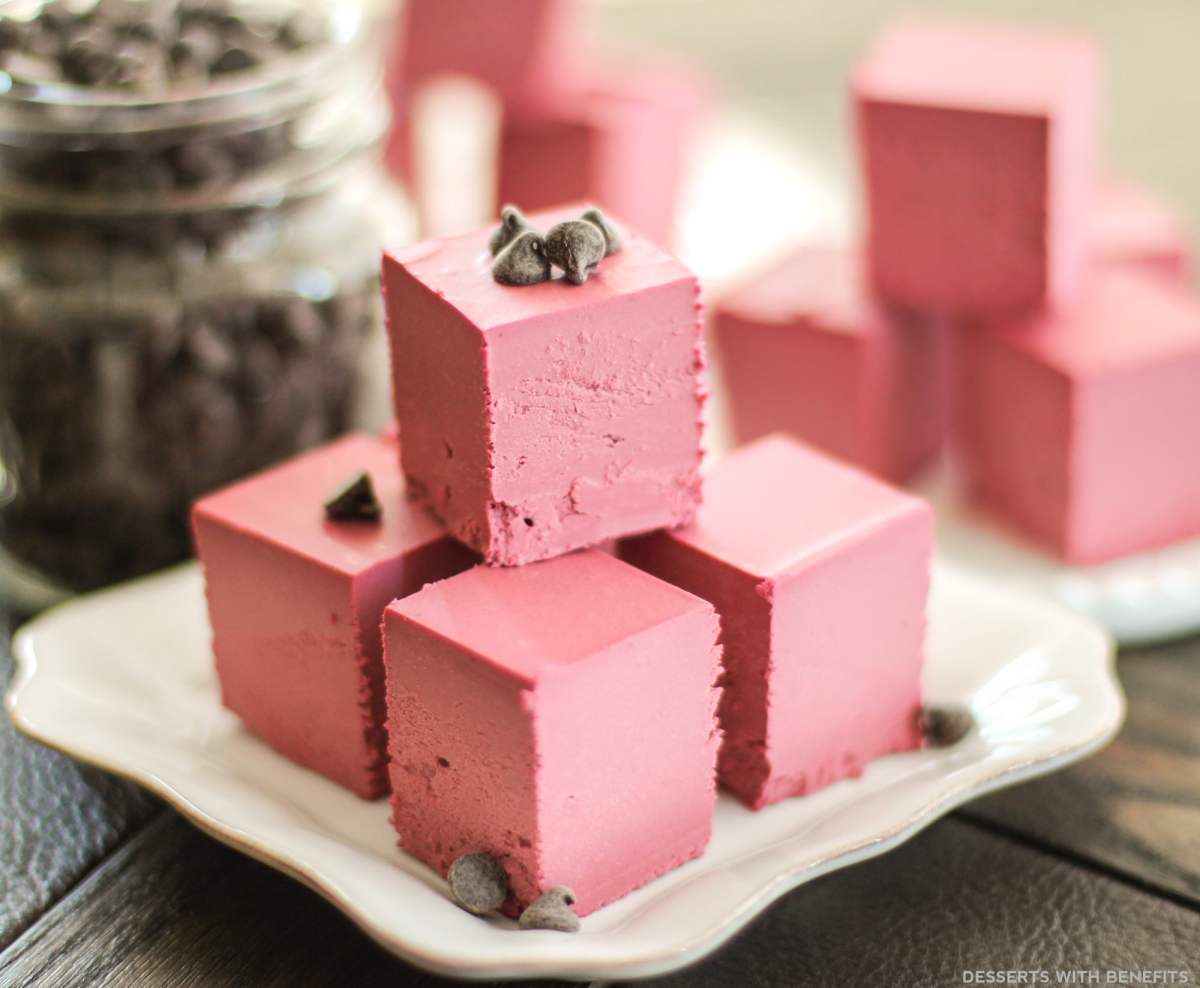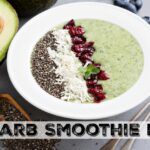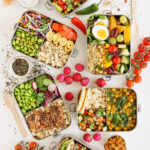Embark on a culinary adventure where deliciousness meets dietary needs! This guide unveils a world of dairy-free, low-carb recipes that tantalize the taste buds without compromising your health goals. Imagine vibrant dishes bursting with flavor, textures that delight, and satisfying meals that are both easy to prepare and incredibly satisfying. From fluffy baked goods to hearty main courses, we’ll explore creative techniques and substitutions to transform your kitchen into a haven of low-carb, dairy-free delights.
We’ll delve into five unique recipe ideas, each meticulously crafted to showcase the versatility of dairy-free, low-carb cooking. Discover the secrets to achieving light and airy baked goods using alternative flours, learn how to masterfully substitute dairy products without sacrificing taste or texture, and explore a diverse range of main courses, from vegetarian options to succulent chicken and fish dishes. A detailed weekly meal plan, complete with a comprehensive grocery list, ensures seamless integration of these recipes into your daily life. Prepare to be inspired by stunning visuals and step-by-step instructions that make even the most complex recipes approachable.
Substituting Dairy in Low-Carb Cooking
Embarking on a low-carb lifestyle doesn’t necessitate sacrificing creamy textures and rich flavors often associated with dairy. Numerous dairy-free alternatives exist, allowing for delicious and satisfying meals while adhering to dietary restrictions. Understanding these substitutions and their impact on taste, texture, and nutritional content is key to successful low-carb cooking.
Dairy-Free Alternatives for Common Dairy Products
Many dairy products have effective low-carb counterparts. Cream can be replaced with full-fat coconut milk (for richness) or unsweetened almond milk (for a lighter texture). Cheese, a staple in many low-carb dishes, can be substituted with nutritional yeast (for a cheesy flavor), cauliflower cheese sauce (for a creamy, cheesy texture), or various types of dairy-free cheese alternatives now widely available in supermarkets. Butter’s rich flavor and texture can be replicated with avocado oil, coconut oil, or ghee (clarified butter, technically still a dairy product but often tolerated by those with mild lactose intolerance). The choice depends on the desired flavor profile and the specific recipe.
Impact of Substitutions on Taste, Texture, and Nutritional Value
Substituting dairy alters the final product’s taste, texture, and nutritional profile. Coconut milk lends a distinct coconut flavor, which may not be suitable for all dishes. Almond milk is milder but can sometimes be watery. Nutritional yeast offers a savory, cheesy flavor but lacks the melt of real cheese. Cauliflower cheese sauce provides a creamy texture similar to traditional cheese sauce, but its taste is slightly different. Avocado oil provides a mild, buttery flavor and a smooth texture suitable for baking and sautéing. Each substitution offers unique benefits and drawbacks, requiring careful consideration based on the specific recipe and personal preferences. For example, while coconut milk adds richness and creaminess, it also contributes more saturated fat compared to cow’s milk.
Recipes Where Dairy-Free Substitutions Excel
Dairy-free substitutions shine in recipes where the dairy element plays a supporting rather than a starring role. For instance, in a creamy tomato soup, coconut milk can create a rich and luxurious texture without overpowering the tomato flavor. In low-carb pancakes or muffins, almond flour combined with almond milk creates a lighter, less dense result compared to using dairy milk and wheat flour. Dairy-free cheese alternatives work particularly well in sauces or as toppings, adding a cheesy flavor without the heaviness of traditional cheese. In baking, coconut oil’s high smoke point makes it ideal for recipes that require higher temperatures, while avocado oil offers a more neutral flavor profile.
Nutritional Comparison of Dairy and Dairy-Free Alternatives
| Product | Calories (per 100g) | Fat (g) | Protein (g) | Carbohydrates (g) |
|---|---|---|---|---|
| Whole Milk | 60-65 | 3-4 | 3-4 | 5-5.5 |
| Full-Fat Coconut Milk | 230-250 | 20-24 | 2-3 | 2-3 |
| Almond Milk (unsweetened) | 15-20 | 2-3 | 1-1.5 | 1-2 |
| Cheddar Cheese | 400-420 | 35-40 | 25-30 | 1-2 |
| Nutritional Yeast | 380-400 | 8-10 | 50-55 | 40-45 |
| Avocado Oil | 884 | 100 | 0 | 0 |
Note: Nutritional values are approximate and can vary depending on the brand and specific product.
Delicious Dairy-Free Low-Carb Main Courses

Embark on a culinary adventure with these three unique and flavorful dairy-free, low-carb main course recipes, designed to tantalize your taste buds without compromising your dietary goals. Each dish showcases vibrant colors, intriguing textures, and a symphony of spices and herbs, creating a visually stunning and deliciously satisfying meal. We’ll explore vegetarian, chicken, and fish options, highlighting simple yet effective cooking methods and plating techniques.
Roasted Cauliflower Steaks with Romesco Sauce
This vegetarian masterpiece features thick slices of cauliflower, roasted to a tender perfection and boasting a beautifully caramelized exterior. The vibrant crimson romesco sauce, a rich blend of roasted red peppers, almonds, and smoked paprika, provides a delightful contrast in both color and flavor. The cauliflower steaks are incredibly satisfying, offering a hearty texture that rivals traditional meat-based dishes.
The cauliflower is prepped by cutting a head of cauliflower into 1-inch thick steaks, ensuring they are relatively uniform in size for even roasting. These steaks are then brushed with olive oil, seasoned generously with smoked paprika, garlic powder, and sea salt, and roasted in a preheated oven at 400°F (200°C) for approximately 20-25 minutes, or until tender and slightly browned. Meanwhile, the romesco sauce is prepared by blending roasted red peppers, blanched almonds, garlic, olive oil, sherry vinegar, and smoked paprika until smooth and creamy. The finished dish features two perfectly roasted cauliflower steaks, artfully arranged on a bed of microgreens, drizzled generously with the vibrant romesco sauce, and garnished with a sprinkle of toasted almond slivers. The contrasting colors of the creamy sauce, the deep brown of the roasted cauliflower, and the bright green of the microgreens create a visually appealing and appetizing presentation.
Lemon Herb Grilled Chicken with Asparagus
This recipe delivers juicy, flavorful grilled chicken infused with the bright zest of lemon and a medley of fresh herbs. The accompanying asparagus, grilled to a tender-crisp perfection, adds a touch of elegance and visual appeal. The vibrant green asparagus provides a lovely contrast to the golden-brown chicken, creating a visually stunning plate.
Chicken breasts are marinated for at least 30 minutes in a mixture of olive oil, lemon juice, minced garlic, fresh rosemary, thyme, and oregano. This marinade not only tenderizes the chicken but also infuses it with a delightful herbal aroma and flavor. The marinated chicken breasts are then grilled over medium heat for approximately 6-8 minutes per side, or until cooked through. Asparagus spears are tossed with olive oil, salt, and pepper, then grilled alongside the chicken for about 5-7 minutes, until tender-crisp. The finished dish showcases two perfectly grilled chicken breasts, artfully arranged on a bed of the grilled asparagus. A final drizzle of extra virgin olive oil and a sprinkle of fresh herbs add a touch of elegance and visual appeal. The interplay of textures and colors—the juicy chicken, the crisp asparagus, and the vibrant green herbs—creates a truly appetizing presentation.
Pan-Seared Salmon with Roasted Cherry Tomatoes and Herbs
This elegant dish features pan-seared salmon fillets, boasting a beautifully crisp skin and a flaky, moist interior. The sweet and slightly tart roasted cherry tomatoes provide a delightful counterpoint to the richness of the salmon, while a scattering of fresh herbs adds a touch of sophistication. The vibrant red of the tomatoes and the bright green of the herbs create a visually striking contrast against the salmon’s pinkish-orange hue.
Salmon fillets are seasoned with salt, pepper, and a touch of garlic powder. They are then pan-seared skin-side down in a hot pan with olive oil until the skin is golden brown and crisp. The fillets are then flipped and cooked until cooked through. Cherry tomatoes are tossed with olive oil, salt, pepper, and fresh oregano and roasted in a preheated oven at 400°F (200°C) for approximately 15-20 minutes, or until softened and slightly caramelized. The finished dish features a perfectly pan-seared salmon fillet, elegantly placed on a bed of roasted cherry tomatoes. A sprinkle of fresh dill and parsley adds a touch of vibrancy and a fresh, herbaceous note. The combination of textures and colors – the crisp salmon skin, the juicy tomatoes, and the bright herbs – creates a visually stunning and delicious dish.
Unlock a world of culinary possibilities with this comprehensive guide to dairy-free, low-carb cooking. We’ve journeyed through a selection of delectable recipes, explored innovative baking techniques, and mastered the art of dairy substitution. With a newfound confidence in the kitchen and a weekly meal plan at your fingertips, you’re equipped to create delicious, healthy meals that cater to your specific dietary needs. Embrace the vibrant flavors, delightful textures, and the satisfaction of nourishing your body with meals that are both delicious and fulfilling. Bon appétit!
Frequently Asked Questions
Can I freeze dairy-free low-carb meals?
Yes, many dairy-free and low-carb recipes freeze well. Consider portioning them into freezer-safe containers for easy reheating.
Are all dairy-free alternatives low-carb?
No, always check the nutritional information. Some dairy-free alternatives, like certain plant-based milks, can be higher in carbohydrates.
How can I make these recipes more visually appealing?
Use vibrant herbs and spices for color, consider creative plating techniques, and garnish with fresh ingredients to enhance the presentation.
What if I don’t like a specific ingredient in a recipe?
Feel free to substitute with similar ingredients based on your preferences and dietary needs. Experiment and find what works best for you!


